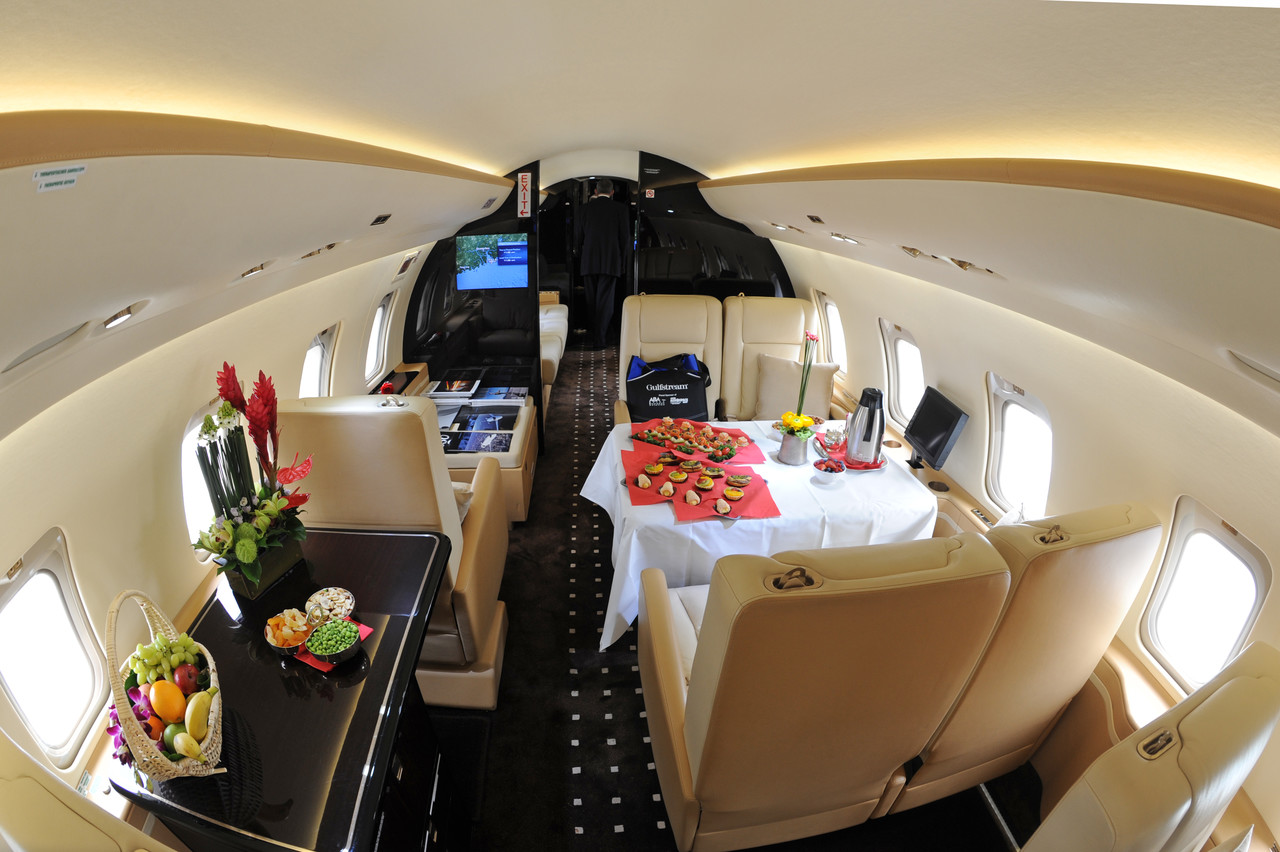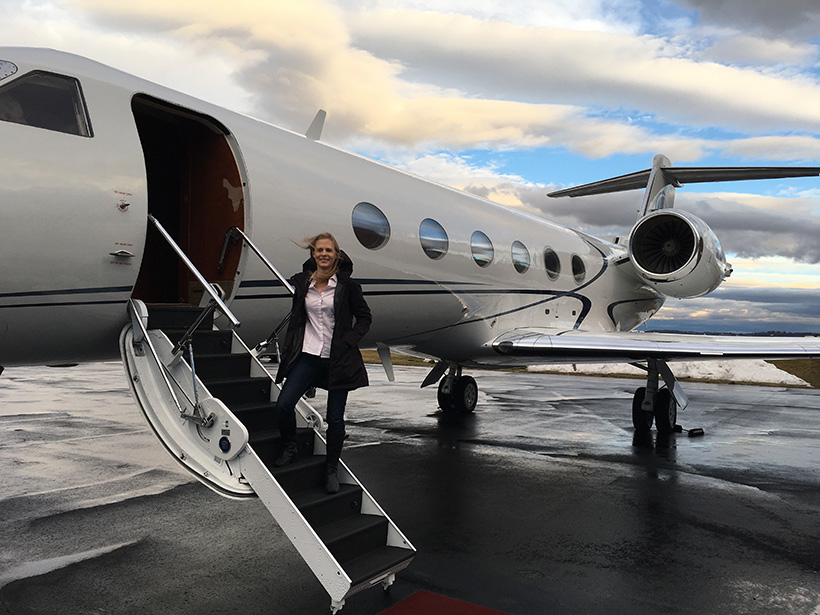The private jet charter industry had undergone a number of changes in the last decade, from newer, faster aircraft, to dealing with one economic downturn after another. One of the biggest differences in modern jet flights is the prevalence and preference for empty leg flights, one way. At one time, the industry was dominated by return flights. When someone booked a private jet flight, they paid for the flight there and back. If you stayed in Palm Beach, for example, for longer than the operators’ “minimums” allowed, you had to pay for both round trips.
How Did Empty Leg Flights Start?
In a brilliant marketing effort, operators and brokers began to capitalize on empty leg returns. Suddenly, trips cost half of what they used to. Passengers began to see that if they were smart and flexible with their travel, they could fly for a fraction of the traditional charter jet prices. Ten years later it's the norm. Savvy travelers have come to expect flights to cost just the hourly rate for their one-way trip.
Clients that could previously afford to fly private once a year or so, were now able to do a number of trips. However, as this new way of flying has taken hold, there has been a lot of confusion in terminology that is brought on by a lot of industry talk and marketing. So, what is an empty leg? What is a one-way flight? How much do they really cost? When and where can you find them?
Although these terms are used synonymously in our industry, they really are two different things. For example, a light jet traveling from the New York area to the Miami area is going to fly for 2.5 hours. A light jet average hourly cost is about $2500 per hour, so by hourly rates, this trip is $6,250. If this aircraft was taking off at HPN and landing in FLL to pick up its passengers, then there would be no added landing fees, and unless the operator has a fuel surcharge, it stands to reason that this would be the price. This is called an empty leg charter.
Traveling from the point the aircraft sets off to the point the aircraft is destined for and paying only the hourly rate for that aircraft (plus tax and a commission for the hard-working broker that hunted that down for you!!). As can be imagined, these empty leg flights are not so common. You can't just pick one for tomorrow afternoon to go wherever you may be going. They are a gem that can only be found with hard work and a lot of luck.
This brings us to the definition of a one-way flight. A one-way flight is simply when you don’t have to pay for the aircraft’s return home. This means you DO pay for the positioning leg from the aircraft home base, and any positioning on the other end to get to where they have their next flight. You DO pay for landing fees at your pickup airport, your destination airport, and sometimes the final destination of that aircraft.
Sometimes, an operator will take a risk, or gamble and give a client a one-way price, believing they can sell the return. On these trips the operator often adds in a logical positioning leg, say from OPF up to PBI to make sure they can pick up another flight without losing money.
They also add a little bit to cover the aircraft parking for a few days, just in case it takes some time to pick up a return trip. All said and done, the $6,250 may have a total of an hour of positioning, ie ISP to TEB to pick up and then OPF to PBI for the next trip. Then add $500 per landing give or take a few hundred dollars. A few overnight fees of $500 and now we are up to about $11,000 for a one-way flight.
How does that differ from a same-day round trip? A same-day round trip will have a flight time of 5 hours costing $12,500, plus landing fees, and fuel surcharges, which will put the trip at an average cost of $15,000. As you can see one-way jet flights are certainly more budget friendly than round trips, and empty leg flights are certainly the best deal. A one-way flight can be tailored to resemble an empty leg flight price if the passenger is willing to be flexible.
For example, if the aircraft is flying out from Morristown, and the client is closer to White Plains, then they'll need to drive up to get to the airport, but they'll save around a thousand dollars or so. To get the best pricing, you also need a broker that knows how to read an operators quote, and ask about what can be deducted from the flight price. Paramount Business Jets sales staff is highly trained in this area, and respected by operators, and considered a solid, knowledgeable broker that won’t make pushy requests.
Even with this firm distinction between an empty leg, and a one-way charter, we still have clients call in looking for something even cheaper. There have been a number of articles published that talk of people showing up to an FBO and finding a jet heading their way, and getting on for just a few hundred, to a few thousand dollars. Though I am sure it has happened, I doubt it happens often.
We sometimes see outstanding offers, like an East Coast empty leg on a Gulfstream for $7,000, or a Falcon 50EX for $5,000. These are called “fire sales”. They happen within 24 hours of the flight date, when an aircraft owner has a planned trip and needs his aircraft in position.
At this point, they will be willing to take whatever someone will pay to cover that expense. They are going to fly anyway, it’s already paid for, and they just want to cover some of that cost. It’s a great find, and believe me, your broker’s heart will start beating 3 times as fast when he sees that price. Just remember that finding an honest broker is key, as many companies lie about the pricing of private jet flights, taking home a bigger commission than they're supposed to.
Where do One-Way/Empty Leg Flights Happen?
One-way/empty leg flights don't occur all over the country, or all over the world. They happen on very distinct routes, almost like scheduled commercial flights. However, if you know these routes, you can use them to help cut down the price of your private jet charter. The most common routes are New York to South Florida and back, New York to LA and back, South Florida to LA and back. A little less common are flights to Chicago, and other corporate jet charter hubs like Dallas, Phoenix, and Cleveland.
There are also international one-way routes, but they are almost exclusively limited to US East Coast flights to Western Europe. In Europe, one-way/empty leg trips are a completely different market, and there is a strong flow of one-way charters to and from Moscow, and the Arabian Peninsula. So, to use this life-hack you have to consider where your destination lays in regard to these routes.
Are you flying out of Pennsylvania to Santa Fe, NM? Then a New York to LA one-way charter will work well for you. If you are going to Seattle, you will need to pay for the positioning empty leg down to LA. You need to know how your flight lays out on the usual traffic routes of corporate jets. And with a little luck, a greatly priced empty leg charter will fit right in with your trip!
If you understand the terminology, you will better understand how to manage your flight, and look for these three types of cost-saving trips. There are many operators that specialize in floating fleets and offer one-way pricing for every flight. If you are flying a busy route, you can expect to find cheaper private jet flights, but don’t assume you will always be able to find a fire sale. Work with your broker, push hard if you feel there is a better deal possible, but understand the costs, and have your broker discuss them with you.
Check empty leg availability here.







